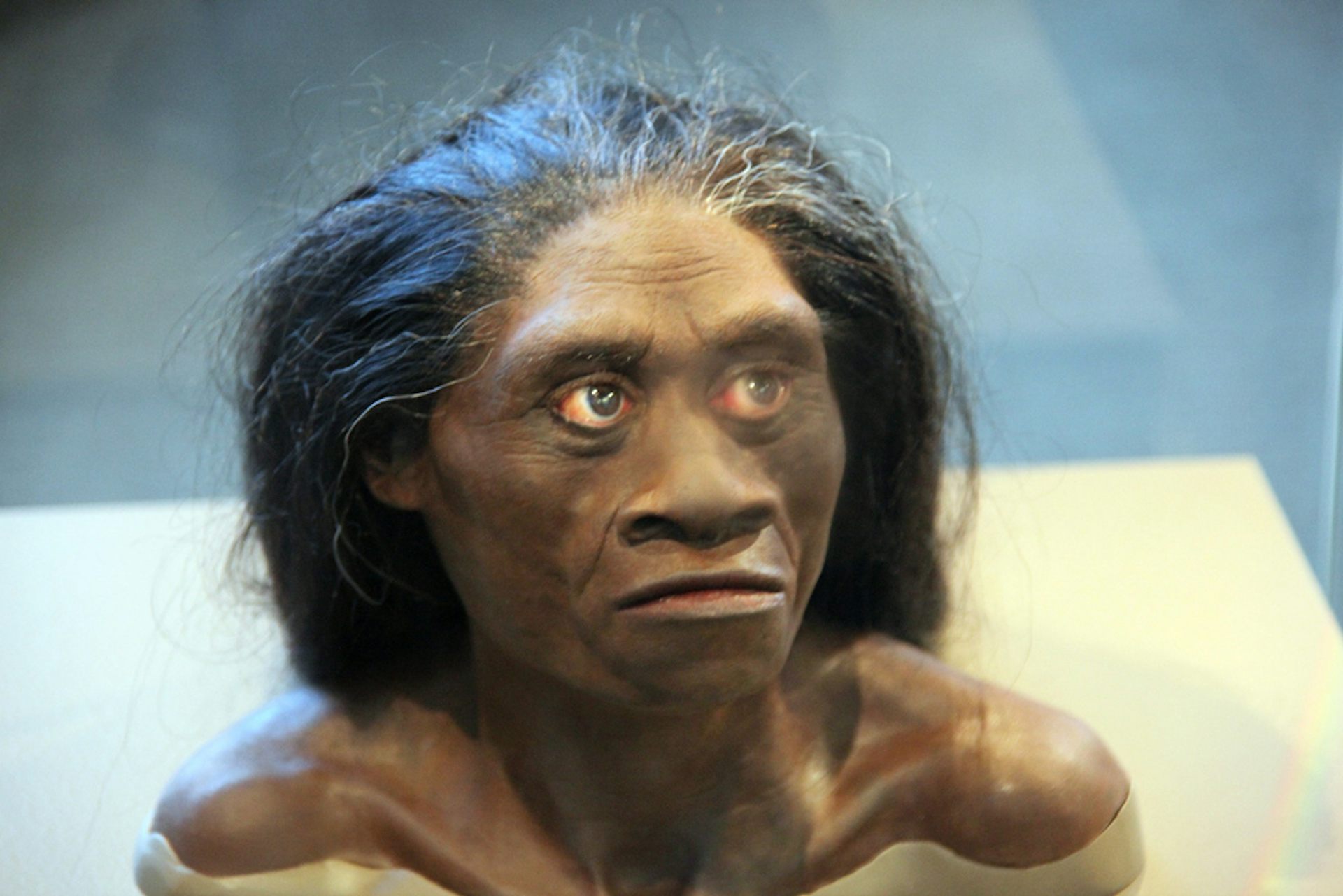Creationism in Crisis
New Science Poses a Massive Threat to Creationist Superstitions
Photograph: Xinhua/Alamy
New Science Poses a Massive Threat to Creationist Superstitions
A skull of a new hominin species named Homo naledi, which was alive sometime between 335 and 236 thousand years ago.
Photograph: Xinhua/Alamy
New analysis of ancient human protein could unlock secrets of evolution | Evolution | The Guardian
If they understood its implications, news that the UK is setting up two centres to study the potential of the new technique of proteomics should give Creationist frauds a sinking feeling on a par with what the captain of the Titanic must have felt. This assumes that they ever allow mere facts to influence them, other than creating a need to explain them away to their credulous cult followers, that is.
Basically, proteomics is the study of residues of ancient proteins sometimes found on ancient fossils in which all useful trace of DNA has disappeared. If these proteins can be recovered and analysed, the hope is that they can be used to deduced some of the DNA of the fossil’s original individual, so pushing the DNA record back much further than currently possible, and with it, constructing the evolutionary trees of, for example, ancient hominins.
The problem this would overcome is that DNA is relatively fragile and is only preserved in useful detail in colder climes, meaning that the African hominin fossils have lost any useful DNA, leaving palaeontologists with having to work out relationships based on anatomical data alone. Proteins, particularly structural proteins, on the other hand, are more stable and are often preserved in, for example, the enamel of teeth.
If successful, this technique could settle debates about when and where the common ancestor of Home sapiens and Neanderthals lived, for example. It might also be possible to fit the ancient South African hominin, H. naledi, in it correct place in the hominin family tree. This enigmatic hominin combines features of both the chimpanzee with its small brain and human lower limbs and arms - basically, a chimpanzee head on a human body. Despite its relatively small brain there is evidence that H. naledi ritually buried its dead, suggesting a sophisticated culture and sense of mortality. It is also in the 'wrong' place to be a direct ancestor of H. sapiens, which is believed to have evolved in East Africa. H. naledi was also contemporaneous with other African hominins, living about 300,000 years ago.
Another enigmatic South African species is Australopithecus sediba, which many people think should be classified as a member of the Homo genus because it was fully bipedal, with human lower limbs, hands and arms and a chimpanzee upper body, suggesting it was transitional between an arboreal ape and a terrestrial hominin.

An artist’s interpretation of how H. floresiensis looked in life.
Credit: Tim Evanson/Flickr, CC BY-SA
The two new centres for the study into the application of proteomics, are to be at the Francis Crick Institutee and the Natural History Museum.
One of the innovations the teams will be using is a hand-held scanner that can quickly show whether a fossil has any recoverable protein, to identify those fossils which might be useful for further study.
If it proves to be a viable tool for the study of these ancient hominins, and much else besides, proteomics has the potential to bury once and for all the claims of Creationism to be a proper science which simply interprets the same facts with a different world view. How many ways are there to interpret facts that show the relationships between the many different species in the hominin family tree, several hundred thousand years ago? Being all the descendants of a single couple, magically created without ancestors a few tens of thousands of years ago isn't one of them.
Readers of this blog can be sure I’ll keep them informed of developments.




No comments :
Post a Comment
Obscene, threatening or obnoxious messages, preaching, abuse and spam will be removed, as will anything by known Internet trolls and stalkers, by known sock-puppet accounts and anything not connected with the post,
A claim made without evidence can be dismissed without evidence. Remember: your opinion is not an established fact unless corroborated.